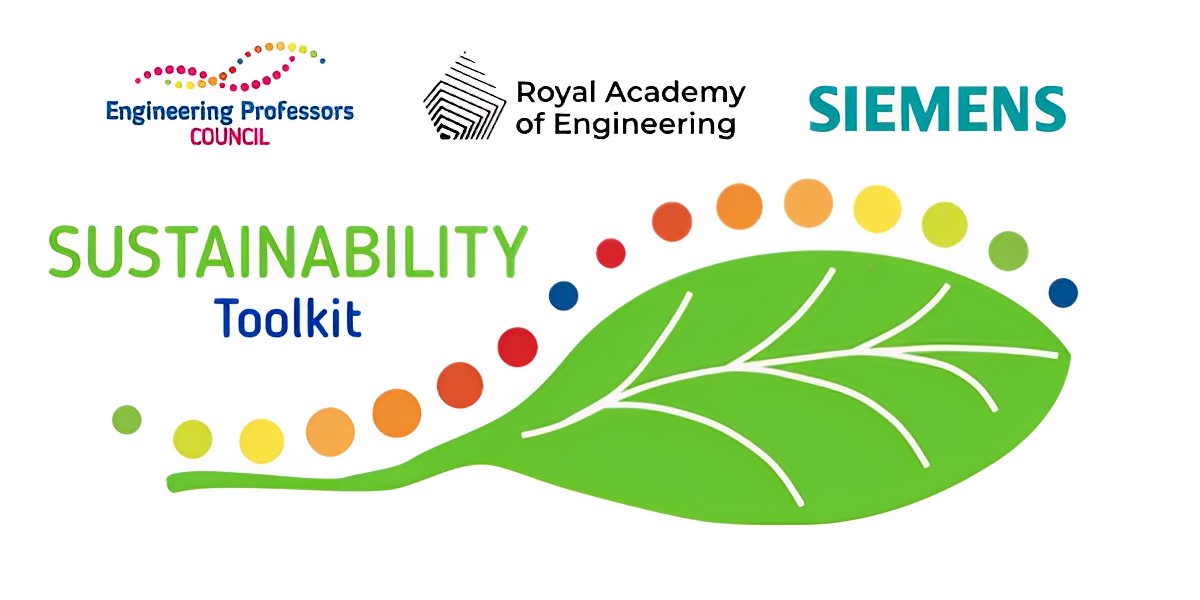Authors: Maryam Lamere, Marianthi Leon, Wendy Fowles-Sweet, Lucy Yeomans, Laura Fogg-Rogers (University of the West of England, UWE Bristol).
Topic: Opportunities and challenges for integrating ESD into engineering programmes via PBL.
Tool type: Guidance.
Relevant disciplines: Any.
Keywords: Education for sustainable development; Project-based learning; Problem-based learning; Engineering design; Sustainability; AHEP; UK-SPEC; Pedagogy; Higher education; Curriculum.
AHEP mapping: This resource addresses two of the themes from the UK’s Accreditation of Higher Education Programmes fourth edition (AHEP4): The Engineer and Society (acknowledging that engineering activity can have a significant societal impact) and Engineering Practice (the practical application of engineering concepts, tools and professional skills). To map this resource to AHEP outcomes specific to a programme under these themes, access AHEP 4 here and navigate to pages 30-31 and 35-37.
Related SDGs: SDG 4 (Quality education); SDG 13 (Climate action).
Who is this article for? This article should be read by educators at all levels in higher education who are seeking an overall perspective on using PBL for integrating sustainability in engineering education. Engaging with this topic will also help to prepare students with the soft skill sets that employers are looking for.
Premise:
Engineering graduates are increasingly required to implement sustainability-focussed initiatives within industry, alongside enhanced expectations from professional bodies and the UK specification (UK-SPEC) for engineers (Engineering Council, 2024). However, a recent study of UK Higher Education institutions highlighted that only a handful have implemented Education for Sustainable Development (ESD) into their curricula in a systemic manner (Fiselier et al., 2018), which suggests many engineering institutions still need support in this area. This article aims to explain opportunities and challenges for integrating ESD into engineering programmes via project-based learning.
1. An overview of problem-based learning as a tool for teaching sustainability within engineering:
To develop sustainability-literate graduates, the Higher Education Academy (AdvanceHE) and the UK Quality Assurance Agency for Higher Education (QAA) emphasise that students need to:
- understand what the concept of environmental stewardship means for their discipline and their professional and personal lives;
- think about issues of social justice, ethics, and wellbeing, and how these relate to ecological and economic factors; and
- develop a future-facing outlook by learning to think about the consequences of actions, and how systems and societies can be adapted to ensure sustainable futures (QAA & HEA, 2014).
Problem-Based Learning (PBL) provides a suitable teaching method for addressing these educational objectives. It is an influential approach in engineering education that emphasises real-world problem-solving and student-centred investigation. PBL deeply engages engineering students, prompting them to develop higher-level thinking skills while they personally confront and navigate economic, social, and environmental issues. This method fosters holistic systems thinking, interdisciplinary insights, ethical considerations, and an emphasis on the long-term viability of technical solutions (Cavadas and Linhares, 2023), while also inspiring and motivating learners (Loyens, 2015).
While PBL can be delivered through theoretical case study examples, the term is used interchangeably with Project-Based Learning within engineering education. Both problem-based learning and project-based learning share characteristics such as collaboration and group work, the integration of knowledge and practice, and foregrounding problem analysis as the basis of the learning process (De Graaff and Kolmos, 2003). One of the main differences is where the parameters lie: with problem-based learning the parameters are defined at the beginning and students are able to find a range of solutions; with project-based learning the parameters lie at the end and students are expected to reach a specific end solution (Savery, 2006). There is also a difference in the role of the tutor and the information they provide: in problem-based learning the tutor facilitates but gives little information, while in project-based learning they are both a facilitator and a source of knowledge (Savery, 2006). Project based learning may be more accepted within engineering education since it is considered to more closely resemble the reality of the profession (Perrenet, Bouhuijs and Smits, 2000), hence Aalborg’s working definition of PBL as “Problem-Oriented, Project-Organized, Learning” (Dym et al., 2005).
PBL thus facilitates the creation of immersive student-centric environments where group projects enable collaborative learning (Kokotsaki, Menzies and Wiggins, 2016). As Lozano et al. (2017) highlight, the nature of PBL advances critical thinking and problem-solving in engineering contexts, enabling students to critically reflect on sustainability concepts and apply this understanding to real-world challenges. Importantly, it is paramount in engineering education to foster action-oriented competencies and incorporate social contextualisation aspects (Fogg-Rogers et al., 2022), such as ethical nuances, justice, and equality, ensuring a comprehensive grasp of an engineer’s role amidst evolving societal and environmental challenges (Wang et al., 2022).
2. Overcoming challenges within PBL:
While PBL presents an obvious approach for embedding sustainability, there are a series of challenges which engineering educators need to overcome to facilitate transformational learning. This section presents some of the most common challenges encountered, along with pedagogic solutions.
Lack of apparent topic relevance
Sustainability topics can sometimes be treated as isolated topics, rather than an integrated aspect of an engineering problem. A perception of sustainability in engineering is that it is not implicit in design, manufacture, and operation; rather it is often perceived as an ‘add-on’ to technical skill development. This applies to both students and teachers: both require support to understand the relevance and complexities of sustainability. When academics delivering sustainability materials may struggle to relate the topic to their own engineering disciplines, students may fail to see how they can impact change. Students must work on real-world projects where they can make a difference locally or globally, and they are more inclined towards sustainability topics that are relevant to their subject discipline with subject experts.
Dealing with an overwhelming amount of information
Students can be overwhelmed by the large amounts of multidisciplinary information that needs to be processed when tackling real-world problems. This can also be a challenge for academics delivering teaching, especially if the topic is not related to their speciality. Additional support (and training), along with allocation of teaching workload, are needed to successfully integrate sustainability contexts for both staff and students.
Group work challenges
PBL is best conducted by mixing individual study and group work. However, groups can fail if group creation, monitoring, supporting, and assessing processes are inconsistent, or not understood by academic tutors or students. Tutors need to act as group facilitators to ensure successful collaborative learning.
Issues with continual engagement
PBL often requires active engagement of students over an extended period (several weeks or months). This can be a challenge, as over time, students’ focus and priorities can change. We suggest that whole programmes need to be designed around PBL components, so that other modules and disciplines provide the scaffolding and knowledge development to the relevant PBL topics.
Delivering PBL online
PBL is best delivered using experiential hands-on learning. For example, at UWE Bristol, this is provided through civic engagement with real-world industry problems and service learning through engagement with industry, schools, and community groups (Fogg-Rogers et al., 2017). This experiential learning was exceptionally challenging to deliver online during the COVID-19 pandemic, and programmes would need to be re-designed for online learning.
3. Recommendations for successful implementation of PBL:
Sustainability topics need to be embedded within engineering education so that each discipline-specific engineering problem is explored within PBL from a technical, economic, ethical, and sustainability perspective. Drawing from UWE Bristol’s journey of ESD implementation using PBL, key recommendations are outlined below.
Managing academic workload
In the initial phases of ESD integration at UWE Bristol, a small number of committed academics contributed a lot of time, effort, and dedication to push through and enable ESD acceptance from staff and students. Programme-wide implementation of ESD required wider support at the institutional level, alongside additional support for module leaders and tutors, so they felt capable of delivering ESD with a realistic workload.
Structured delivery of ESD
Structuring delivery over time and throughout different modules enables students to work through large amounts of information. Providing summative feedback/assessments during key phases of the PBL exercise can also help students stay on track and manage their workload. At UWE Bristol, group presentations with pass/fail grading are introduced mid-project, so students can present information gathered about the context, before beginning problem-solving.
Managing group work challenges
PBL is best conducted by mixing individual study and group work. Ensuring assessment briefs have implicit sustainability requirements is vital to embedding ESD concepts, so that students can see the need for engagement. This is further enhanced by stating the relevance to workplace contexts and UK-SPEC requirements. Tutors need to facilitate group dynamics and engagement, along with providing support structures for students who, for whatever reason, are unable to engage with group work.
Creating an enabling environment for ESD integration
The integration of sustainable development throughout the curricula at UWE Bristol has been supported at the institutional level, and this has been critical for the wide scale rollout. An institution-wide Knowledge Exchange for Sustainability Education (KESE) network was created to support staff by providing a platform for knowledge sharing. Within the department, Staff Away days were used to run sustainability workshops to discuss ESD and topics of interest to students. An initial mapping exercise was conducted to highlight where sustainability was already taught within the curriculum and to identify the discipline relevant contexts (Lamere et al., 2022). Further training and industrially relevant contexts were provided to convince some staff that sustainability needed to be included in the curriculum, along with evidence that it was already of great relevance in the wider engineering workplace. This led to the development of an integrated framework of key learning requirements which embedded professional attributes and knowledge of the UK-SPEC.
Student motivation and continual engagement
For sustainability education to be effective, the content coverage should be aligned, or better still, integrated, with the topics that form part of students’ disciplinary studies. To maintain continual engagement during the PBL delivery and beyond, clear linkages need to be provided between learning and future career-related practice-based sustainability activities. Partnerships have been developed with regional stakeholders and industry, to provide more context for real-world problems and to enable local service learning and community action (Fogg-Rogers, Fowles-Sweet, 2018). Industry speakers have also been invited to contribute to lectures, touching on a wide range of sustainability and ethical issues. ESD teaching is also firmly linked to the individual’s own professional development, using the UK-SPEC competency requirements, and linked to end-point assessments. This allows students to see the potential impact on their own professionalism and career development.
These recommendations can enable engineering educators to integrate sustainability topics within the curriculum using PBL to enhance student learning and engagement.
References:
Engineering Council (2024). UK-SPEC Fourth Edition. (Accessed 05 February 2024).
Fogg-Rogers, L., Lewis, F., & Edmonds, J. (2017). ‘Paired peer learning through engineering education outreach’, European Journal of Engineering Education, 42(1). (Accessed 05 February 2024).
This work is licensed under a Creative Commons Attribution-ShareAlike 4.0 International License.
Any views, thoughts, and opinions expressed herein are solely that of the author(s) and do not necessarily reflect the views, opinions, policies, or position of the Engineering Professors’ Council or the Toolkit sponsors and supporters.
To view a plain text version of this document, click here to download the PDF.





